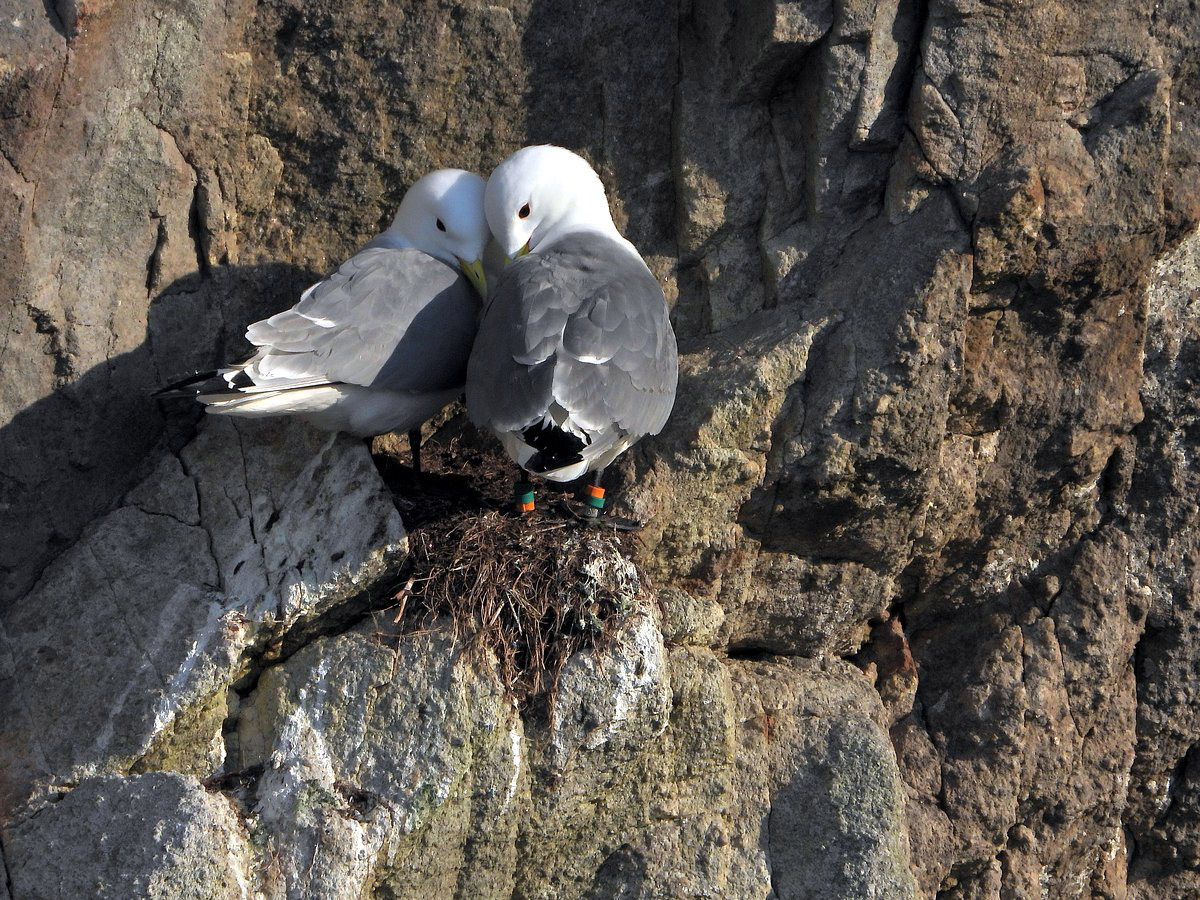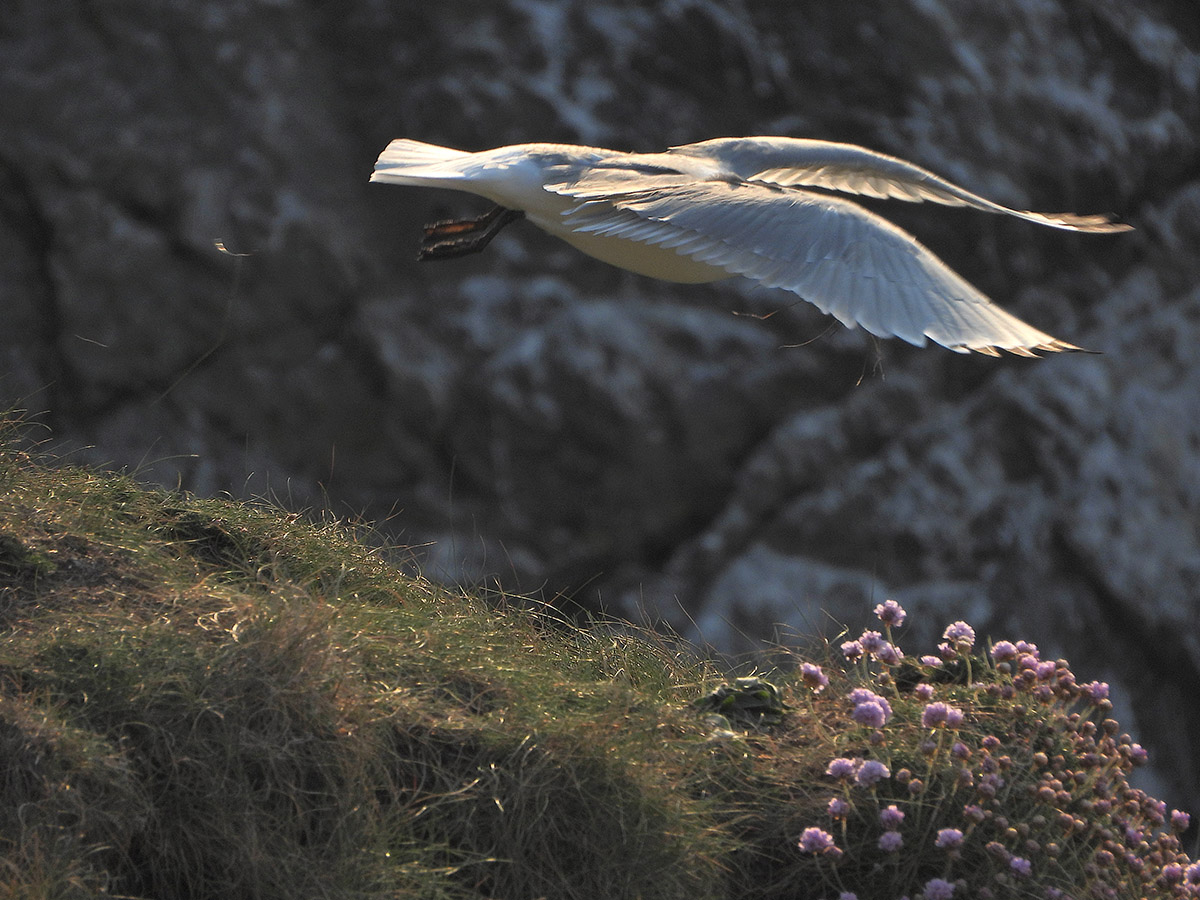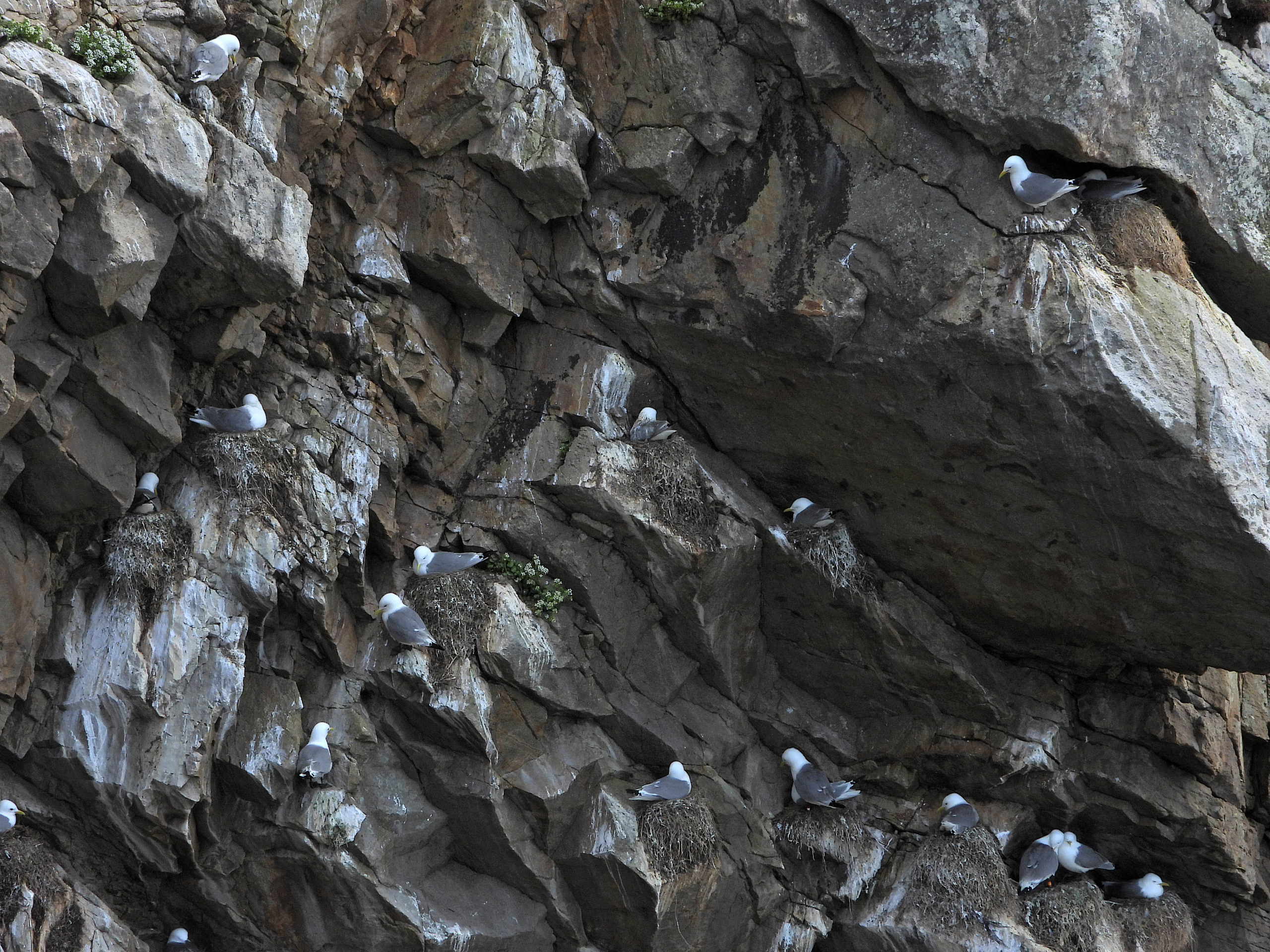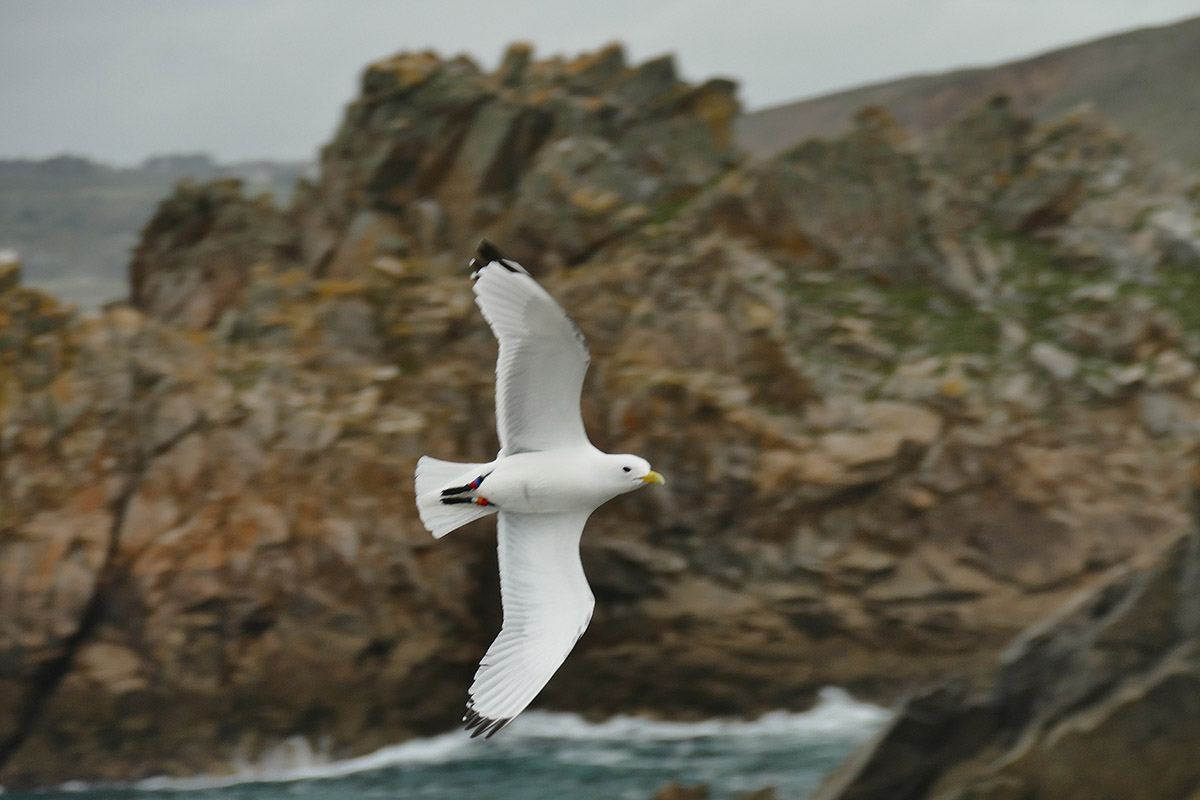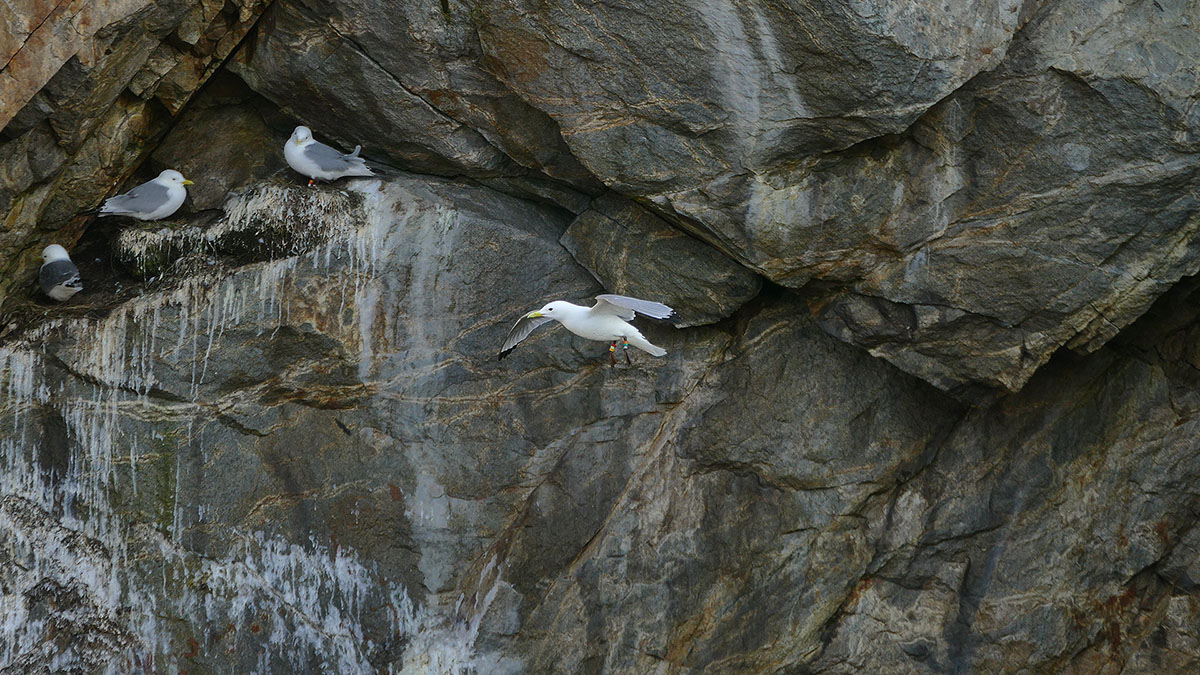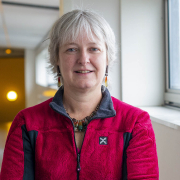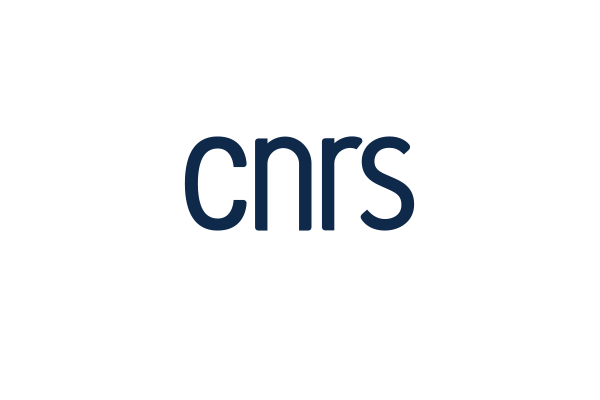Observation series
SEDERISSA is a long-term demographic monitoring of black-legged kittiwake populations that has maintained several objectives since 1979.
- Fragmented population dynamics and habitat selection
The localities used by this species to reproduce varied greatly during the study, revealing highly dynamic communicating vessels between colonies, and phenomena of local extinction and colonisation of new localities or recolonisation. The determinants of individual decisions leading to these movements, the consequences in terms of local and global dynamics are studied, as well as the viability of this population. In particular, this population has seen a considerable reduction in the number of localities used over the last 40 years, which raises the question of the impact of the disappearance of alternative localities on the overall viability of the population. Interactions with other species (competition, predation) are also studied.
- Evolution of life stories
Individuals manage to produce a highly variable number of chicks during their lifetime. The determinants of this production are studied, both individual determinants (age of entry into reproduction) and factors linked to the dynamics of this fragmented population (desertion of colonies, presence of predators considerably reducing the possibility of producing young).
- Phenology
In a context of global change, migration and reproduction phenology is studied in order to identify correlations with environmental factors, to assess the degree of plasticity of individuals, and ultimately to evaluate possible evolutionary responses.
The site
- Breeding colonies of the black-legged kittiwake in the Iroise Sea (from Groix to Ouessant).
- Colonies still active in 2022:
- Pointe du Raz (48° 02′ 25″ N, 4° 44′ 28″ W)
- Pointe du Van (48° 03′ 52″ N, 4° 42′ 54″ W)
Monitoring
Demographic monitoring of the black-legged kittiwake (Rissa tridactyla) population in the Iroise Sea (SEDERISSA).
This monitoring programme started in 1979 and is based on colour-coded tagged individuals giving them a unique identity (over 20,000 tagged individuals). The monitoring starts in January when the return of the winter migration starts, and lasts until the end of the breeding season in August (departure on migration).
The data collected are typical of individual level monitoring in population ecology, population dynamics, and behavioural ecology.
SEDERISSA – black-legged kittiwakes
In pictures
All photographs are by Olivier NORMANT.
The team | Contacts
- Paul Acker, Center for Biodiversity Dynamics, Norwegian University of Science and Technology
- Matthieu Authier, PELAGIS Observatory, Research Engineer, La Rochelle University
- Étienne Danchin, CNRS Research Director Emeritus, Evolution & Biological Diversity Laboratory
- Jean-Yves Monnat, the memory and engineering of the project, retired academic (Université de Bretagne Occidentale, France), initiator of the project in 1979 (authorisation at the Centre de Recherche sur la Biologie des Populations d’oiseaux, Museum National d’Histoire Naturelle)
- Many students, collaborators, trainees, volunteers (> 150, in particular Jacques Nisser and Morgane Huteau of long standing).

